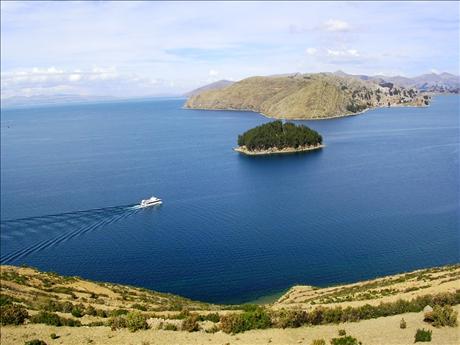Lost in the Andes and covered with legends, Titicaca awakens the imagination, makes one want to visit its shores. But the real attraction here is not visible - a few dozens of floating islands.
The lake itself had contrived to climb to an altitude of 3820 meters. Occupying the lower part of the highlands stakes Titicaca belongs to 2 countries - Peru and Bolivia. The maximum width of 80 kilometers, and the total surface - 8300 square kilometers, most of whom are located in Peruvian territory. Tourists traveling to Peru, familiarity with the lake beginning in Puno - a city founded in 1668 near the mine, where silver was mined. The town stands on a hillside on the slope increases, and he has nowhere else to grow. For three centuries, the population had accumulated to 100 thousand. There is speculation that the Titicaca - part of the ocean was cut off from him after the lifting of the Western Cordillera Oriental. This theory is confirmed by the presence on the Bolivian gigantic salt mines.
But most tourists are interested in the islands, which naturally float on the lake with all its population. It's hard to believe but it is true: Hundreds of people are born, grow up, spend their entire lives and leave them without leaving these islands, floating in the cool depths of nowhere over the lake.
"Lake Titicaca" in translation from the Aymara means "sacred stone". He was in the temple of the sun, and he in turn - on the island of the Sun, the largest of the entire lake archipelago. Unfortunately, from the temple itself remained only ruins. Tempered rather wayward Titicaca. Most steep it in the rainy season - from December to February. At this time, the river brings a lot of the red and the color of water in the lake is changing. In February, the level of the mirror is increased by half a meter, and maybe more. In the flood Titicaca overflows its banks, flooding fields and even the lower part of Puno, along with the pier. And when zaduyut winds up a big wave. Besides the lake there are ebbs and flows like the ocean, but water level fluctuations were modest - up to 80 centimeters. And yet, in such circumstances to live on the islands drifting, perhaps quieter than on the coast.



No comments:
Post a Comment